A Jump on Spring
I got a jump on spring yesterday and started pruning hardy kiwifruit vines. The fruit is a kissing cousin of fuzzy, market kiwis, except, with smooth skins and small size, they can be popped whole in your mouth like grapes. Hardy kiwis are also cold-hardy, which their cousins are not.
The vines need yearly pruning to let light and air in among the stems for productivity and plant health, to keep fruiting stems within easy reach, and to stimulate new stem growth each year off which grow fruiting shoots the following year.
My plants are trained on 5 wires strung between T-trellises, one wire down the middle of the trellis flanked by 2 wires on either side of that central wire. Each plant’s trunk rises up to the middle wire and then divides into two cordons, or permanent arms, that run in opposite directions along the middle wire. Fruiting arms, which are 1-year-old stems, grow off perpendicularly to the cordon to drape down over the outside wires.
As I approached the vines with shears, lopper, and small saw in hand, the vines looked back at me like an intimidating, tangled mess. Three steps in pruning brought everything in order. I first cut back all fruiting arms to within a foot or so of the outside wire and shortened each cordon back to where it began growth last year. Arms bear fruiting shoots near their bases so don’t need the whole of their lanky stems. As to the cordons, if they were allowed to grow longer and longer, one plant would tangle into the next plant down the row.
Next, the hardest part: I reached into the remaining tangle to cut back fruiting arms that have, over the years, begun to originate further and further off the cordons. These got shortened so that new shoots, for fruit 2 years hence, would originate closer in to the cordons. Left to their own devices, as they are in the wild on the edges of Asian forests, the vines would be climbing 100 ft. high on anything on which they could grab hold.
Finally, I thinned out most of the remaining fruiting arms so that they are about a foot apart. I’ll do a final pruning in spring, thinning more where needed and shortening all fruiting arms to their final length of about 18 inches long.
I’m left now with a pile of prunings. Their intertwining stems make nice decoration. I could also save some for my cat. Kiwi stems have a pleasing effect on the cats, similar to catnip. In Asian zoos, they have been used to calm “large cats.”
————————————————-
What joy a mere sprout can foreshadow! Late last summer a gardening friend gave me some sprouts from her Maid of Orléans jasmine (Jasminum sambac). By the end of summer, a few of the cuttings had rooted and even flowered. The plant or its flower wouldn’t win (or lose) any beauty contests, but is well worth growing for its unabashed fragrance. The aroma is sweet and rich and not at all cloying, even after the flowers fade.
What’s more, this jasmine flowers freely. As a matter of fact, it just finished its second round of flowering. Contrast this behavior with my two plants of common jasmine (Jasminium officinale). These latter plants occasionally cough forth a few flowers in late winter but nothing like the profusion of white blossoms they once did. I’ve tried everything, from starting new plants from cuttings to pinching shoots all summer until August to keeping them cool in until late winter to keeping them dryish until late winter to keeping them cool and dryish until late winter to keeping them in the greenhouse to . . . you get the picture.
The only dark cloud hovering over my Maid of Orleans was the potting mix. Something seemed not quite right with it, having me worried that the plant might not grow or, worse, expire (as did the plant from the gardening friend from whom I got the cuttings). Not that this is a time of year to expect growth from any plant.
But now, that cloud has moved on. The new sprout looks happy and healthy and foretells of a fragrant future.
————————————————-
I mixed up a new batch of potting soil, which I’ll need anyway in a couple of months for indoor sowing of the first seeds of next season. Into a 5 gallon bucket went finished compost and soil, equal parts, sifted. Into another 5 gallon bucket went peat moss and perlite, equal parts, sifted. I tipped the contents of both buckets together into the garden cart, sprinkled on 1 cup of soybean meal and a handful of kelp, and repeatedly slid a flat-bladed shovel under the pile and turned it over and over. Once everything was thoroughly mixed, I shook and forced it again through the 1/2-inch sieve and packed it away into buckets.
This potting mix will be home to the roots of seedlings and houseplants, as well as large, potted fig trees, roses, and pomegranates. Also, to Maid of Orleans, as soon as she outgrows her present quarters.

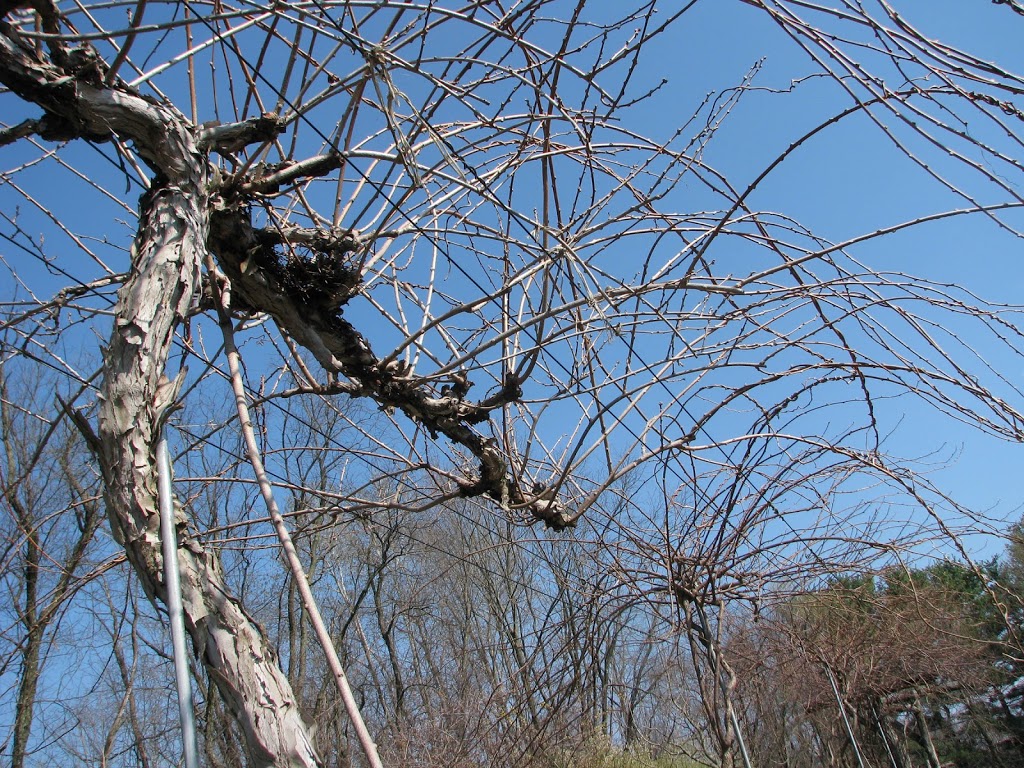
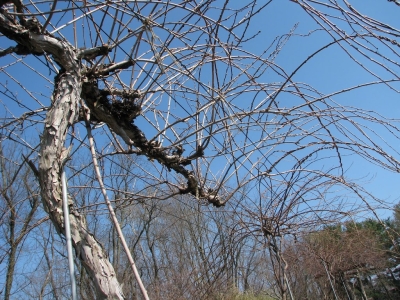
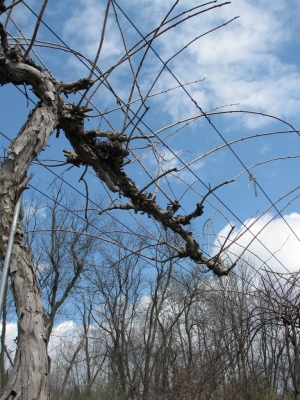
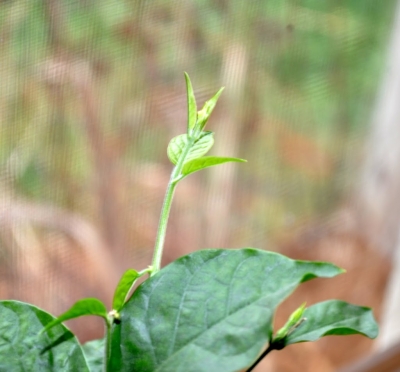


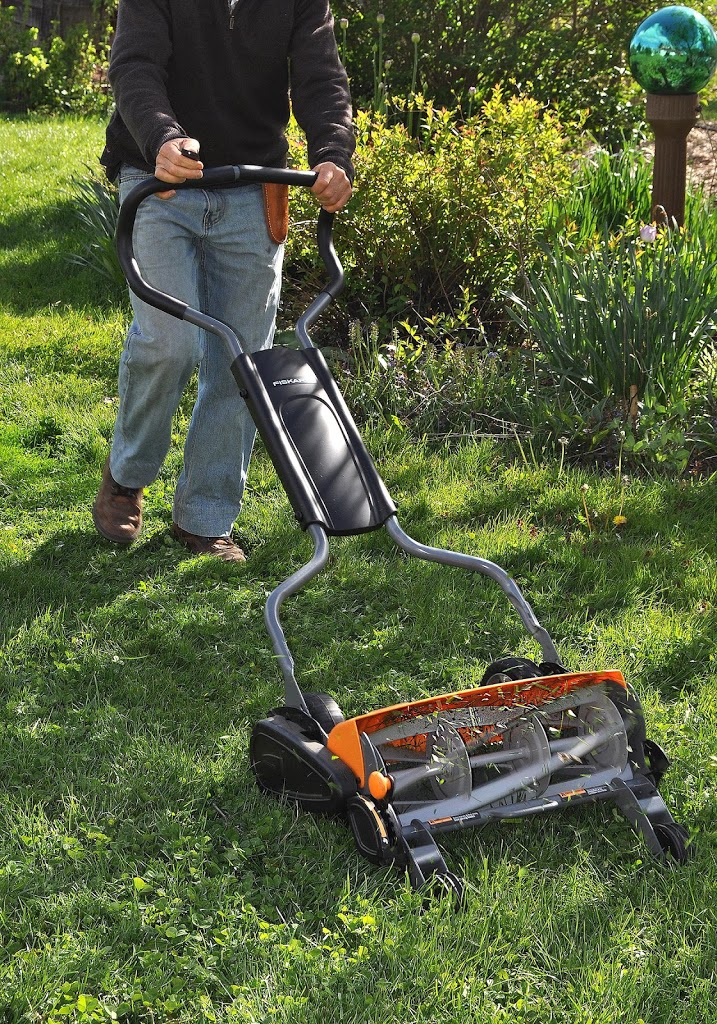
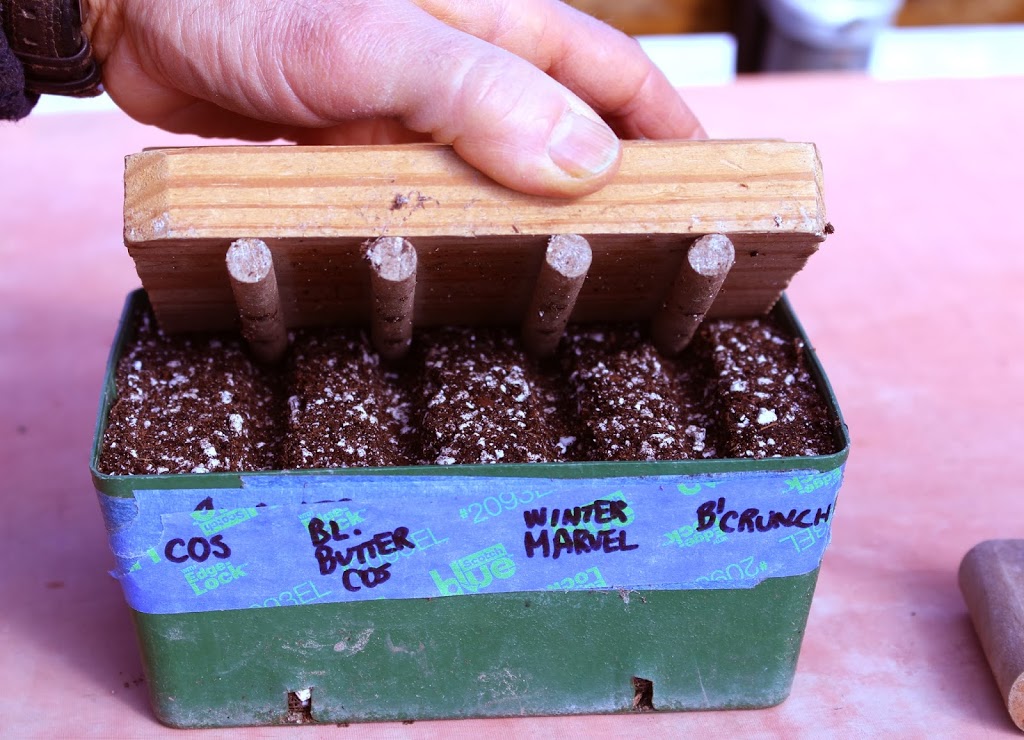
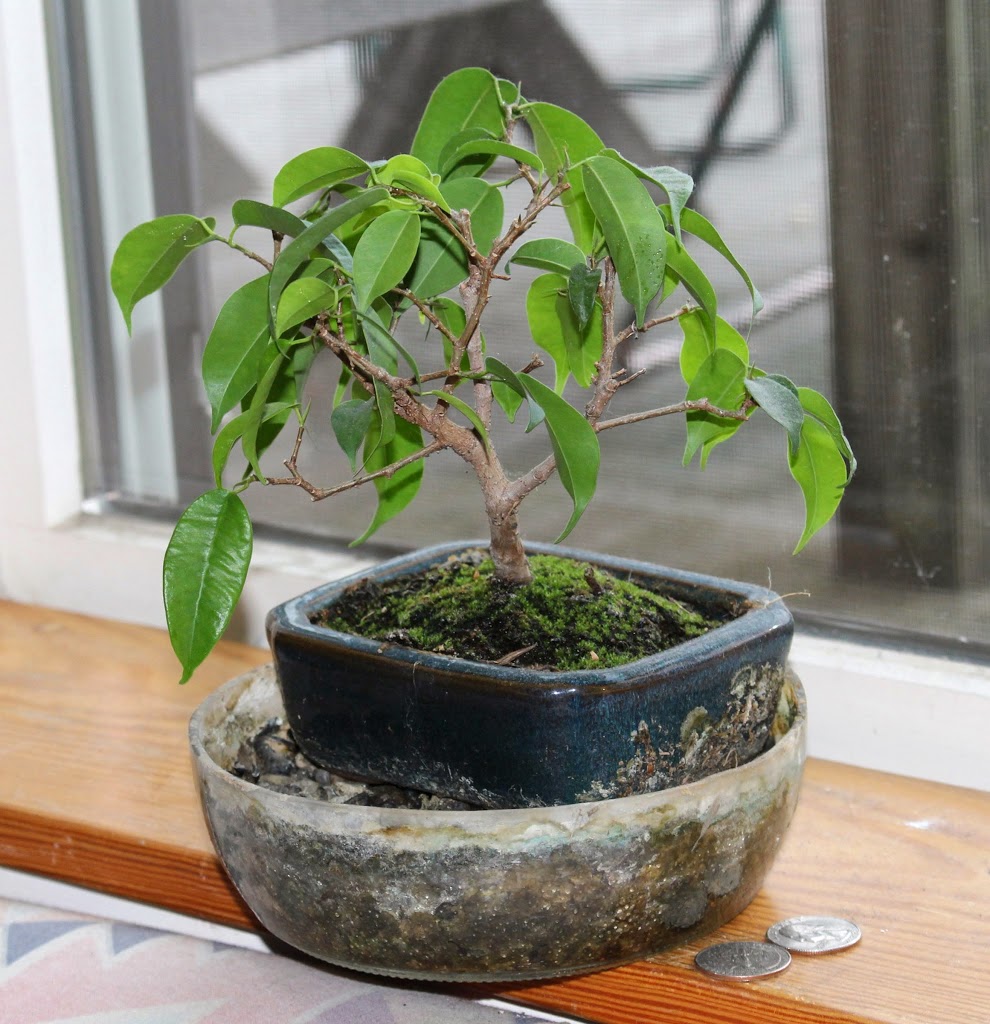
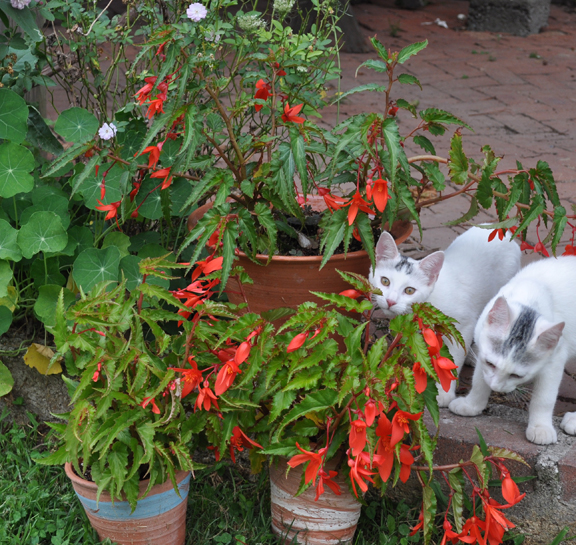
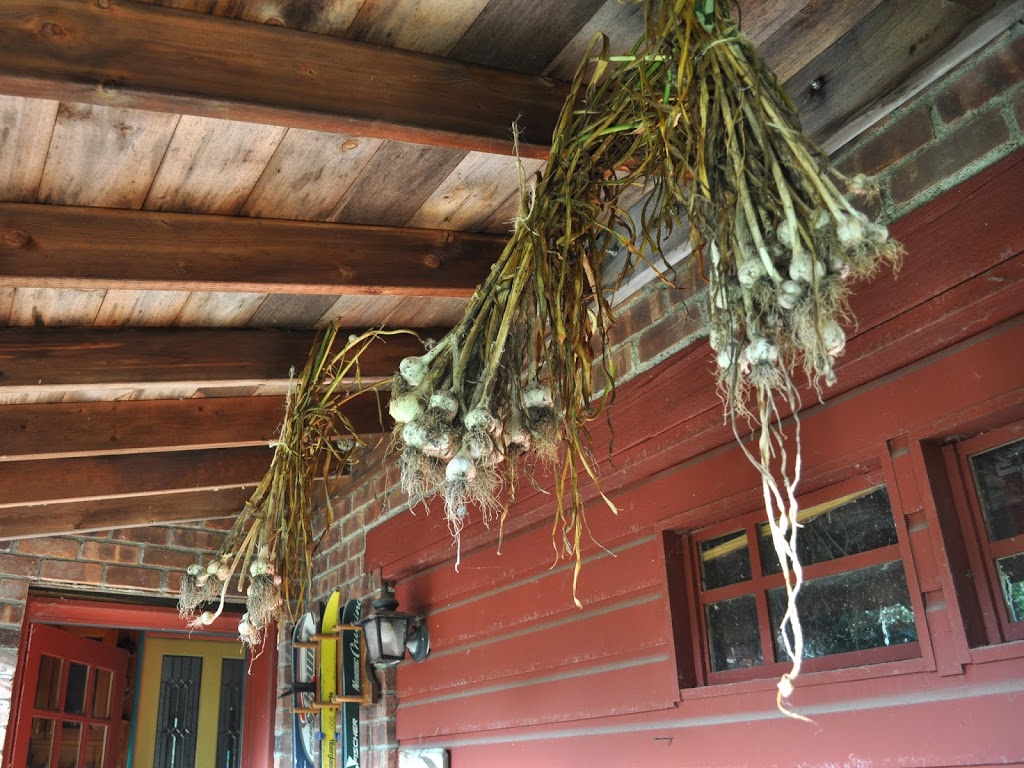
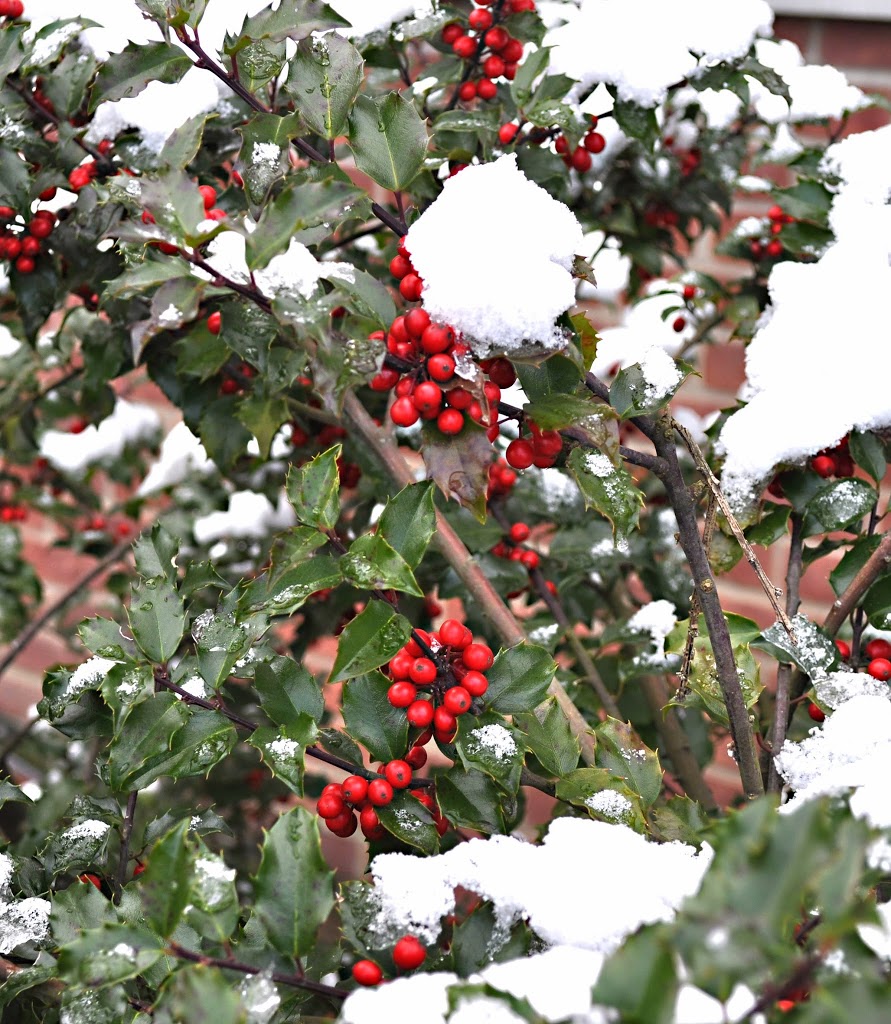

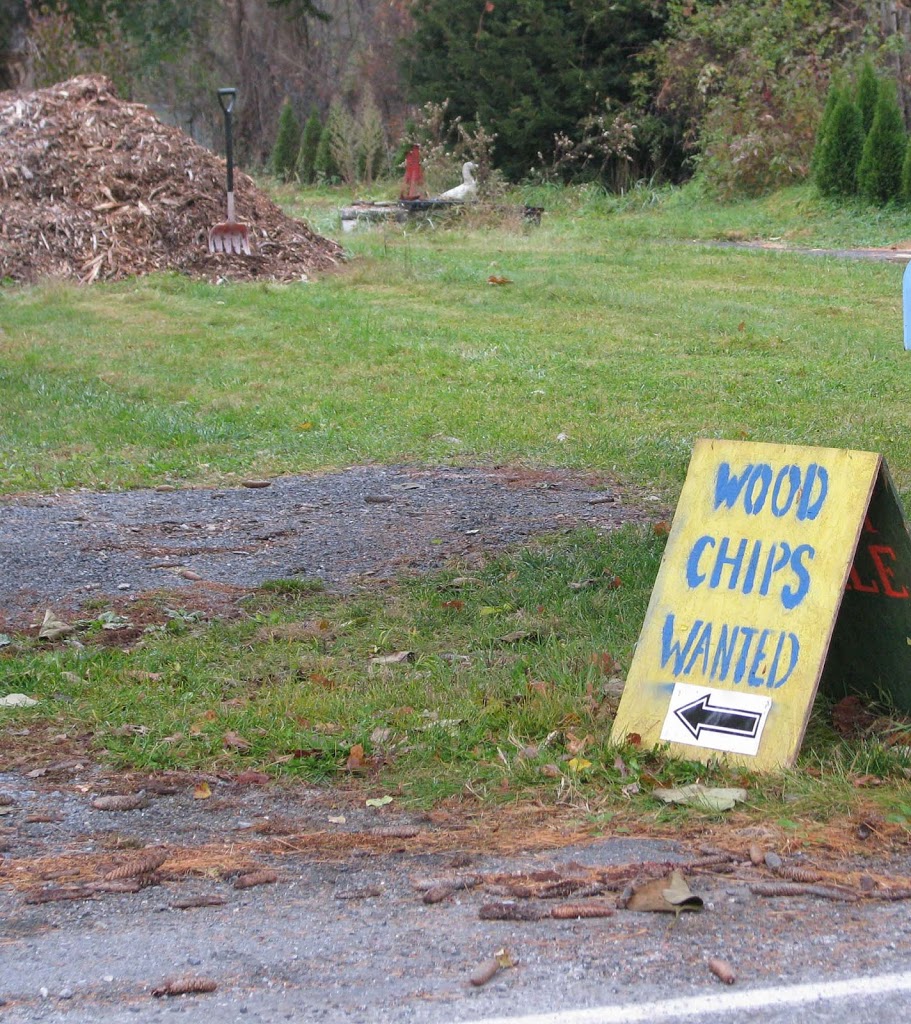
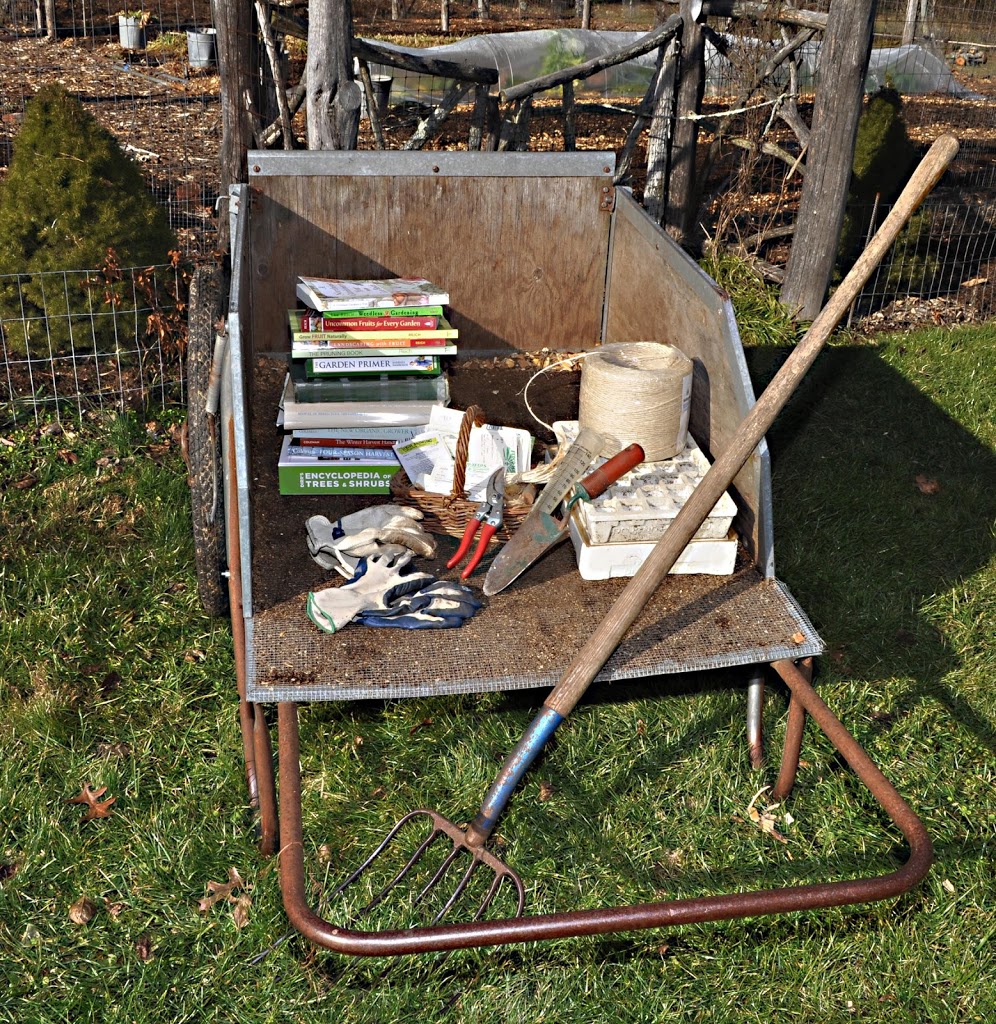
I have always dreamed of growing hardy kiwi but they well-drained soil, yes? And we have heavy clay. One day I will try, maybe making a mound of ideal soil enriched with organic matter to overcome the drainage problem.
Hi Lee!
I have 2 questions. I bought 2 hardy kiwi plants last summer (one male, one female, actinidia kolomikta that supposedly makes beautiful frost-pink half leaves). When should I start to trim them? Not at one year, surely? They are quite small (2 feets).
My second question… Is that a white cat in the small tree on the right of the last picture? The one where you are shovelling your sowing mix?
I highly recommend hardy kiwifruits; they are delicious and easy to grow.
As far as trimming them: Right from the start, begin training them to one or two trunks, cutting off any other shoots so that all the energy goes into one of those trunks. From there, it depends on what you’re going to train the vines on . . . if I may recommend a book that has information on pruning them, my book, of course, THE PRUNING BOOK. Perhaps you’re library has it.
Yes, that’s a white cat in the last photo.
HA! So based on what I’ve read/heard you say, and Mike McGrath’s comments on your advice, I’m guessing that either that’s NOT a peach tree, or you didn’t thin it out well enough if your cat couldn’t get all the way through the tree? 😉
Love your advice and blog. Got Growing Fruit Naturally as a Christmas gift and look forward to doing a better job with the fruit trees, strawberries, raspberries etc in my NE Ohio yard. I’m tempted to try currants because they’re so beautiful, but I really don’t know if I’d enjoy the flavor, and it’s next to impossible to find fresh currants at a market.
Yes, red currants are beautiful although admittedly not my favorite fruit, especially since I have blueberries and black currants (both of which are among my favorite fruits, although black currants have a very strong taste that not everyone likes fresh) ripening at the same time. I grow red currants for their beauty and for some diversity in my morning cereal. They do make a tasty and beautiful jelly also.
Both of my grandmothers (out in Kansas) turned me on to homemade plum jelly when I was a kid. Now I’ve got three 2-in-1 plum trees from Stark Bros in the back yard, and hopefully I’ll get to make some plum jelly of my own this year. I put them in a year and a half ago, and they were LOADED with beautiful blooms last spring, but the blooms were too early due to the wonky weather, and I got zero plums. Hopefully this year will be different.
Both grandmothers made their plum jelly from wild plums – I’ve tried growing beach plums figuring that might be close and because they’re supposed to be tough – no luck. Over 4 years neither got bigger than a few feet, and while they’d get a lot of plums, they weren’t much bigger than pea-sized, and one plant died off this year. Hopefully the plum trees will have better luck!
Fruit growing keeps us eternally optimistic. You might want to try planting some American-type plums, such as Toka, Alderman,and La Crescent. Or, since you’re going to be making jam rather than eating them fresh, some truly wild plums, just seedlings of Prunus americana or P. angustifolia. Or maybe you can find some wild plums. Around here, they bear pretty well. Check out http://www.sln.potsdam.ny.us.
One problem I and others have found with beach plums is that although they bloom reliably, they are very capricious in fruiting, and no one knows why.
Cool!! Thanks for the helpful info – did a quick skim of SLN’s site and will get back to it this weekend. $8 a tree for the P. americana seems like a nice price, although I have to wonder if they’re maybe going to be a few years longer before fruiting than trees bought at nurseries/big box stores. (In addition to being optimistic, don’t forget impatient!) 😉
Thanks again!
J
True, a seedling tree will take longer to bear than a grafted tree. Plant both and then, perhaps, you’ll have something to much on while waiting for the seedling to bear. Plums generally do not take inordinately long to come into bearing.